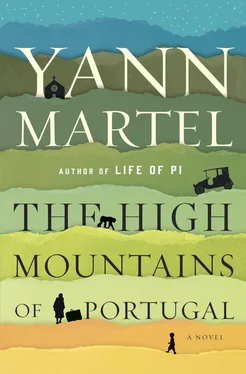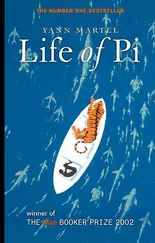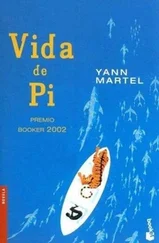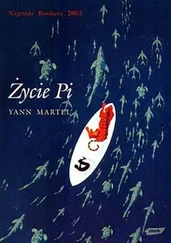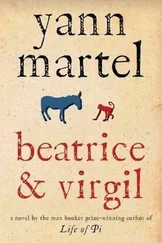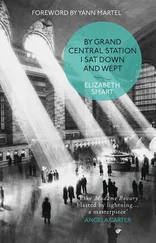But it’s too late for that. There she stands, next to the table, without the least interest in the chair he has brought in for her.
Perhaps he could get her to sit in Senhora Melo’s alcove. What would he and José do without the indefatigable Senhora Melo? Her office, which is not much wider than the table on which rests her typewriter, abuts the wall shared by the two autopsy rooms. On either side of it, at the level of her head, is an opening fitted with a panel of straw weave that gives onto each room. The multiple tiny holes of the weave allow her to hear with her ears but not see with her eyes. If it were otherwise, if she saw the dripping organs and the disembowelled bodies, she would shriek and faint, and she is there to record, not to react. She types with extraordinary speed and accuracy, and her Latin spelling is excellent. Senhora Melo’s assistance allows him and José to observe and speak as they are doing, without having to stop to write. They have so many autopsies to do. As it is, while one doctor works and dictates, the other finishes up with a body, takes a break, then prepares for the next case. Alternating like this, the two doctors efficiently perform autopsy after autopsy.
Sometimes, after he has made his confession to Father Cecilio, it occurs to him that Senhora Melo might be a better confessor. To her, many more harsh truths have been revealed than to Father Cecilio.
He normally wears rubber gloves when he performs an autopsy — a fairly recent and welcome advance in technology. He treats his gloves with great care, washing them with soap and water every day and keeping them moist with mercury biniodide spirit. But he hesitates to pull them out now. Maria Castro might think that by wearing them he is expressing disdain for her husband’s body. Better in this case to go back to the old bare-hands technique.
But first he will replace the strip of flypaper. Flies are a persistent problem in Portugal’s climate. They thrive as peddlers of contagion. He makes it his regular business to replace the yellow coils that hang in the autopsy rooms.
“If you’ll excuse me,” he says to Maria Castro. “Hygiene, order, routine — all very important.” He takes the chair intended for her and places it under the used strip, climbs onto it, removes the strip studded with the fat bodies of dead flies, and replaces it with a new, bright, gluey strip.
Maria Castro watches him silently.
From the chair he gazes down at the autopsy table. They never look very big on the table, the bodies. It’s built to accommodate the largest frames, there’s that. And they’re naked. But it’s something else. That parcel of the being called the soul — weighing twenty-one grams, according to the experiments of the American doctor Duncan MacDougall — takes up a surprising amount of space, like a loud voice. In its absence, the body seems to shrink. That is, before the bloat of decomposition.
Of which Rafael Castro seems to be free, likely the result of the cold, but also of the jumbling of his body while travelling in a suitcase. Eusebio is used to being greeted by the Mortis sisters when he comes to work. The oldest, Algor, chills the patient to the ambient temperature; Livor, the middle sister, neatly applies her favourite colour scheme — yellowish grey to the top half of the patient and purple red to the bottom half, where the blood has settled — and Rigor, the youngest, so stiffens the body that bones can be broken if limbs are forced. They are cheery ones, these sisters, eternal spinsters who ravish innumerable bodies.
Rafael Castro’s ears are deep purple; there is only that touch of Livor Mortis. And his mouth is open. The agonal moment is the last knock of the body at the door of the eternal before that door swings open. The body convulses, the breath rattles in the chest, the mouth opens, and it’s over. Perhaps the mouth opens to release the twenty-one grams. Or perhaps it’s nothing more than a relaxing of the mandibular muscles. Whatever the case, the mouth is usually closed, because bodies always come to him washed and prepared, the jaw tied shut with a strip of cotton fabric, the knot resting on top of the head, the hands bound together in front of the body, and the rectum and, if the case be, the vagina packed with cotton batting. Cutting these ligatures and removing these stops are the first steps in opening the book of the body.
The teeth seem in good condition, a departure from the stock peasant with the healthy bones but the decayed teeth.
No identifying tag is attached to the big toe. Eusebio has to take it on faith that the dead man is indeed Rafael Miguel Santos Castro, from the village of Tuizelo. But he has no reason to doubt that Maria Castro is telling the truth.
Nor is there a clinical report. That report is like the jacket copy of a book, announcing what is to come. But just as jacket copy can stray from the actual content of a book, so can a clinical report. With no knowledge of the case at all, he will nonetheless find out what racked Rafael Castro, what pushed his body to give up.
He steps off the chair. He looks at the shelf of bottles along the wall near the table. He picks out the bottle of carbolic oil. Since he’s not going to use his rubber gloves, he smears his hands with the oil to protect them. Then he finds the bar of Marseille soap and scratches it so that slivers of soap stick under his fingernails. This precaution, along with vigorous hand washing and the application of scented oils, means that he can reach for his wife in the evenings without her recoiling and beating him away.
He will start with words. Words will be the anaesthetic that will prepare Maria Castro for what he is about to do.
“Senhora Castro, let me explain a little what is going to happen. I will now perform an autopsy on your husband. The purpose of it will be to discover the physiological abnormality — that is, the disease or the injury — that led to his death. In some instances, when the clinical report is very clear, this object is determined fairly easily, as a result of examining a single organ, say the heart or the liver. The healthy body is a balancing act of a thousand parts, and the serious imbalance of a single part can, on its own, throw a life off its tightrope. But in other cases, where we have no clinical information, as is the case here, the dead body is, well, a murder mystery. Needless to say, I’m using this as a figure of speech. I don’t mean a real murder. I mean the body becomes a house inhabited by a cast of characters, each of whom denies having anything to do with the death, but in a few rooms we will find clues. The pathologist is the detective who pays close attention and uses his grey cells to apply order and logic until the mask of one of the organs can be torn off and its true nature, its black guilt, proved beyond a doubt.”
He smiles to himself. Maria, his Maria, would be pleased with his murder-mystery analogy. Maria Castro just stares at him steadily. He moves on.
“Where do we begin? With the surface. Before any incision is made, the body undergoes a surface examination. Does the body appear to have been nourished appropriately? Is it thin or emaciated or, on the contrary, obese? Is the chest barrel-shaped, indicative of bronchitis and emphysema, or is there a pigeon breast, a sign of rickets in early life? Is there unusual pallor to the skin or the opposite, any deepening of the colour or any sign of jaundice? Skin eruptions, scars and lesions, fresh wounds — all these must be noted, their extent, their severity.
“The orifices of the body — the mouth, the nose, the ears, the anus — must be checked for discharges or abnormalities, as must the external genitalia. Lastly, the teeth.
“In your husband’s case, everything seems in order. I look here and here. Here. Here. He looks like a normal, externally healthy man of his age who died of an internal cause. I notice, here, an old scar.”
Читать дальше
